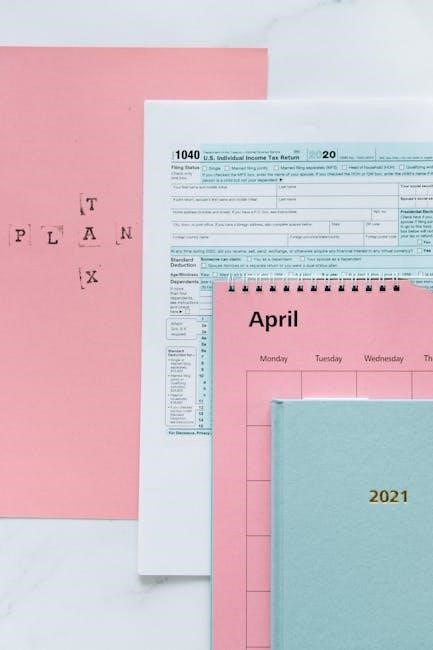Year 1 Spelling Words PDF: A Comprehensive Guide
Embark on a spelling adventure with our comprehensive guide focusing on Year 1 spelling words in PDF format. This resource is designed to support young learners as they develop foundational literacy skills. Discover helpful tips, lists, and activities to enhance spelling proficiency and confidence.
Welcome to the foundational stage of spelling! Year 1 is a crucial year in a child’s literacy journey, marking their formal introduction to the world of written words. During this period, children begin to grasp the relationship between sounds (phonemes) and letters (graphemes), learning to decode and encode simple words; This introduction to spelling lays the groundwork for future reading and writing success.
Year 1 spelling focuses on high-frequency words, CVC (consonant-vowel-consonant) words, and basic phonetic patterns. Through engaging activities and structured learning, children develop a sense of how words are constructed and how to represent them accurately on paper. Understanding these basic concepts is the first step toward becoming a confident and competent speller.
This is where pupils learn to spell common words. By the end of Year 1, pupils should be able to read a number of words. This resource aims to provide comprehensive support for parents and educators, offering valuable insights and practical tools to help children master Year 1 spelling.
Importance of Spelling in Year 1
Spelling proficiency in Year 1 is more than just memorizing words; it’s a fundamental building block for overall literacy development. Mastering spelling at this stage has a profound impact on a child’s reading fluency, writing skills, and confidence in communication. Accurate spelling allows children to express their thoughts clearly and effectively in written form.
Strong spelling skills in Year 1 also enhance reading comprehension. When children can easily recognize and decode words, they can focus on understanding the meaning of the text, rather than struggling with individual words. This leads to improved reading speed and a greater enjoyment of reading. It also aids in better comprehension of complex words.
Furthermore, success in spelling boosts a child’s self-esteem and motivation to learn. As they see themselves succeeding in spelling, they become more engaged and enthusiastic about learning in general. This positive attitude towards learning sets them up for future academic success. It’s all about setting up a strong foundation for future learning, making Year 1 spelling crucial.
Curriculum Alignment for Year 1 Spelling
Year 1 spelling curricula are carefully designed to align with national standards, ensuring that children learn the essential spelling patterns and high-frequency words necessary for early literacy. These curricula typically focus on introducing foundational phonics skills, enabling children to decode and spell words based on their sounds. Alignment with the curriculum provides a structured approach to learning.
The Year 1 spelling curriculum often incorporates common word families, such as CVC (consonant-vowel-consonant) words, to help children recognize patterns and build their spelling vocabulary. High-frequency words, also known as sight words, are another key component, as these words appear frequently in reading materials and need to be memorized for fluency. Regular review and assessment are integrated.
Furthermore, the curriculum emphasizes the importance of regular practice and application of spelling skills in writing activities. Children are encouraged to use their growing spelling knowledge to write simple sentences and short stories, reinforcing their learning and building confidence. The curriculum supports both reading and writing.

Common Year 1 Spelling Words
Explore the essential spelling words for Year 1 students, including high-frequency words, CVC words, and CCVC words. These foundational words form the building blocks of early literacy and reading comprehension, fostering confidence and success in young learners.
High-Frequency Words (Fry Words)
High-frequency words, often known as Fry words, are the most commonly used words in the English language. Mastering these words is crucial for Year 1 students as it significantly improves their reading fluency and comprehension. These words often don’t follow typical phonetic rules, making memorization essential for early readers and spellers.
Focusing on Fry words allows children to quickly recognize and understand a large percentage of the text they encounter. This boosts their confidence and encourages a love of reading. Examples of Year 1 Fry words include “the,” “a,” “I,” “is,” “and,” “to,” “in,” “he,” “she,” “it,” “of,” “was,” “you,” “are,” and “we.”
Incorporating these words into daily spelling practice, reading activities, and writing exercises will help Year 1 students build a strong foundation in literacy. Regular exposure and repetition are key to ensuring that these words become automatic for young learners, setting them up for success in future academic endeavors. Games and interactive activities can also make learning these words fun and engaging.
CVC Words (Consonant-Vowel-Consonant)

CVC words, or Consonant-Vowel-Consonant words, form the building blocks of early reading and spelling for Year 1 students. These simple words follow a straightforward phonetic pattern, making them easier for children to decode and encode. Mastering CVC words is a crucial step in developing phonemic awareness and understanding the relationship between letters and sounds.
Examples of CVC words include “cat,” “dog,” “sun,” “bed,” “pig,” “hat,” “pen,” “run,” “sit,” and “top.” These words provide a solid foundation for children to apply their knowledge of individual letter sounds to blend them together and form complete words.
When teaching CVC words, it’s helpful to use visual aids, such as flashcards with pictures, to reinforce the connection between the word and its meaning. Encourage children to sound out each letter individually and then blend the sounds together to read the word. Activities like word building with letter tiles or writing CVC words in sand can also make learning more engaging and memorable. Regular practice and repetition are key to building fluency and confidence with CVC words.
CCVC Words (Consonant-Consonant-Vowel-Consonant)

Building upon the foundation of CVC words, CCVC words (Consonant-Consonant-Vowel-Consonant) introduce a slightly more complex phonetic structure. These words challenge Year 1 students to recognize and blend two initial consonant sounds before moving on to the vowel and final consonant. Mastering CCVC words is an important step in expanding a child’s phonological awareness and spelling capabilities.
Examples of CCVC words commonly encountered in Year 1 include “stop,” “clap,” “frog,” “spin,” “trap,” “flag,” “plum,” “crab,” “swim,” and ” грип.” These words require children to accurately identify and articulate the combined sounds of the initial consonant blend.
Teaching CCVC words effectively involves breaking down the word into its individual sounds and practicing blending them together. Using visual aids, such as picture cards and sound buttons, can be helpful. Activities like segmenting the word into its sounds and then blending them back together, as well as using letter tiles to build CCVC words, can reinforce learning. Regular exposure to these words through reading and writing activities is crucial for solidifying understanding and improving spelling skills.

Year 1 Spelling Lists Examples
Explore various examples of Year 1 spelling lists designed to cater to different learning styles and curriculum requirements. Discover weekly, term-based, and thematic lists to effectively support your child’s spelling development throughout the academic year with engaging and structured content.
Weekly Spelling List Structure
Creating a structured weekly spelling list is crucial for Year 1 students. The structure should incorporate a manageable number of words, typically ranging from 5 to 10, to avoid overwhelming young learners. Each list should focus on specific phonetic sounds or word families, such as CVC (consonant-vowel-consonant) words like ‘cat,’ ‘dog,’ and ‘sun.’
Incorporate high-frequency words, also known as sight words or Fry words, which are commonly encountered in reading and writing. Examples include ‘the,’ ‘and,’ ‘a,’ ‘to,’ and ‘is.’ These words often don’t follow typical phonetic rules, so memorization is key. Additionally, include words that align with the week’s reading material or classroom themes to reinforce vocabulary.
A well-structured list should also provide opportunities for practice. Include activities such as writing the words multiple times, using them in sentences, or creating simple stories. Regular review is essential to consolidate learning. Consider a Friday spelling test to assess progress and identify areas needing further attention. Remember to make it fun and engaging!

Term-Based Spelling Lists
Term-based spelling lists offer a broader approach to Year 1 spelling, encompassing a wider range of words and concepts covered throughout an academic term. These lists are typically structured around thematic units or specific learning objectives outlined in the curriculum. For instance, a term focusing on animals might include words like ‘cat,’ ‘dog,’ ‘bird,’ ‘fish,’ and ‘mouse.’
The advantage of term-based lists is their ability to integrate spelling with other subjects, reinforcing learning across different areas. These lists should incorporate high-frequency words relevant to the term’s themes, alongside words that introduce new phonetic patterns or spelling rules. Regular review and assessment are crucial to monitor progress and identify areas where students may need additional support.
Consider breaking down the term list into smaller, more manageable weekly segments to avoid overwhelming students. Incorporate varied activities such as word sorts, sentence writing, and games to keep learning engaging. Term-based lists also allow for differentiation, catering to individual learning needs and paces within the classroom. Remember to celebrate successes and foster a positive attitude towards spelling!
Thematic Spelling Lists
Thematic spelling lists are a fantastic way to engage Year 1 students by linking spelling to specific topics or themes they are learning about in class. These lists make learning more relevant and memorable. For example, if the class is studying “Under the Sea,” the spelling list might include words like ‘fish,’ ‘sea,’ ‘crab,’ ‘shell,’ ‘star,’ and ‘blue.’
The beauty of thematic lists is their flexibility. They can be tailored to any subject, from animals and plants to seasons and holidays. This approach helps children build their vocabulary and understand how words relate to each other within a context. It also encourages them to make connections between different areas of learning.
When creating thematic lists, choose words that are both relevant to the topic and appropriate for Year 1 spelling level. Include a mix of high-frequency words and words that introduce new phonetic sounds or spelling patterns. Use visuals, such as pictures or drawings, to help children understand the meaning of the words and make the learning experience more engaging and interactive. Games and activities that reinforce the theme can further enhance learning and retention.

Resources for Year 1 Spelling
Discover a wealth of resources to support Year 1 spelling. From printable word lists in PDF format to interactive online games, and comprehensive workbooks, we offer tools to make learning spelling fun and effective for young learners.
Printable Spelling Word Lists (PDF)
Accessing printable spelling word lists in PDF format provides a convenient and versatile resource for Year 1 teachers and parents. These lists offer a structured approach to learning, allowing for focused practice and reinforcement of key spelling patterns. The PDF format ensures easy distribution and printing, making them ideal for classroom activities, homework assignments, or at-home learning. Many resources offer weekly spelling lists based on word families, covering hundreds of essential words for first graders.
These printable lists often include high-frequency words, CVC words (consonant-vowel-consonant), and other age-appropriate vocabulary. Teachers can use these lists to create customized spelling tests and activities. The availability of free Year 1 spelling PDFs makes it accessible for everyone to support children’s literacy development. Printable lists can be organized by term or theme, providing flexibility in lesson planning and curriculum integration.
By utilizing these resources, educators and parents can effectively guide Year 1 students in mastering essential spelling skills, building a strong foundation for future academic success. Furthermore, printable lists can be easily adapted to suit individual student needs and learning styles.
Online Spelling Games and Activities
Engage Year 1 students with interactive online spelling games and activities to make learning fun and effective. These digital resources offer a dynamic alternative to traditional methods, capturing children’s attention and fostering a positive attitude towards spelling. Online games often incorporate visual and auditory elements, catering to different learning styles and enhancing memory retention.
Many platforms provide a variety of activities, including word searches, matching games, and fill-in-the-blank exercises, all tailored to Year 1 spelling words. These games can be easily accessed on tablets or computers, making them suitable for both classroom and home use. Interactive elements provide instant feedback, helping children identify and correct their mistakes in real-time.
Teachers can use online platforms to track student progress and identify areas where additional support may be needed. These digital tools often align with the national curriculum, ensuring that students are learning relevant and age-appropriate material. By integrating online spelling games and activities into the learning routine, educators can create a stimulating and enjoyable environment that promotes spelling proficiency and confidence in Year 1 students. The gamified approach transforms learning into an adventure, motivating children to actively participate and master new words.
Workbooks and Teaching Resources
Supplement Year 1 spelling instruction with a variety of engaging workbooks and teaching resources designed to reinforce learning and cater to diverse needs. These materials provide structured practice and activities that complement classroom instruction and support independent learning at home; Workbooks typically include exercises such as handwriting practice, word building, and sentence construction, all centered around Year 1 spelling words.
Teaching resources often feature lesson plans, flashcards, and assessment tools to help educators effectively deliver spelling instruction. These resources can be adapted to suit different teaching styles and classroom environments. Many workbooks incorporate colorful illustrations and interactive elements to capture children’s attention and make learning more enjoyable.
Teachers can utilize these materials to differentiate instruction and provide targeted support to students who may be struggling with spelling. Workbooks and teaching resources offer a comprehensive approach to spelling education, combining explicit instruction with ample practice opportunities. They serve as valuable tools for both teachers and parents, facilitating a collaborative effort to enhance Year 1 students’ spelling proficiency. By utilizing these resources, educators can create a well-rounded and effective spelling program that fosters confidence and success in young learners.

Tips for Teaching Year 1 Spelling

Effective Year 1 spelling instruction involves phonics, engaging activities, and consistent practice. Employ the “Look, Say, Cover, Write, Check” method. Make learning fun through games and interactive exercises. Focus on high-frequency words to build a strong spelling foundation for young learners.
Phonics-Based Approach
A phonics-based approach forms the cornerstone of effective Year 1 spelling instruction, emphasizing the relationship between sounds and letters. This method enables children to decode words by understanding phonemes (sounds) and graphemes (written symbols). Teachers introduce letter sounds systematically, building from simple to complex phonetic patterns. This approach includes teaching consonant and vowel sounds, digraphs (two letters making one sound), and blends (two or three letters blended together).
By segmenting words into individual sounds, children can learn to spell more accurately. Activities such as sound blending and segmenting exercises reinforce these skills. Regular practice with CVC (consonant-vowel-consonant) words and simple word families (e.g., -at, -an, -it) helps solidify understanding. Integrating phonics into daily reading and writing activities is crucial.
Utilizing resources like phonics-based spelling lists and games makes learning engaging. Consistent reinforcement and repetition are key to mastering these fundamental spelling skills, setting a strong foundation for future literacy development. This systematic approach fosters confidence and independence in young spellers.
Look, Say, Cover, Write, Check Method

The Look, Say, Cover, Write, Check method is a highly effective strategy for teaching Year 1 spelling, engaging multiple learning styles. First, children carefully look at the word, paying attention to its individual letters and overall shape. Next, they say the word aloud, reinforcing the connection between the visual and auditory aspects.
Then, they cover the word, challenging their memory. Now, they write the word from memory, applying their recall skills. Finally, they check their spelling against the original word, identifying any errors. This self-correction step is crucial for learning and retention.
This method promotes active learning and encourages children to take ownership of their spelling progress. Regular use of this technique enhances visual memory, phonetic awareness, and self-assessment skills. Incorporating this method into daily spelling practice can significantly improve accuracy and confidence. Providing visual aids and positive reinforcement further supports learning, making spelling a more enjoyable and successful experience.
Making Spelling Fun and Engaging
Transforming spelling from a chore into an enjoyable activity is key to success in Year 1. Incorporate games like word searches, crosswords, and bingo using the weekly spelling list. Use colorful markers, magnetic letters, and playdough to make learning tactile and interactive.
Create silly sentences using the spelling words to add a humorous element. Encourage storytelling with the words, fostering creativity and contextual understanding. Integrate technology with online spelling games and interactive apps.
Turn spelling practice into a collaborative effort by having children work in pairs or small groups. Organize spelling bees or mini-competitions to spark enthusiasm. Offer rewards and praise for effort and progress, not just perfect scores.
Remember to keep the activities short and varied to maintain attention. Celebrate successes and create a positive learning environment where mistakes are seen as opportunities for growth. By making spelling fun and engaging, you’ll foster a love for language and build a strong foundation for future learning.
